
6 minute read
Hand Picked
By Tony Centonze
A dozen years ago Chris Haycraft owned a painting business in Nashville, Painting Perfection, an interior/exterior full service operation which he enjoyed, but when the 2008 recession hit, Chris was given an opportunity that has become Outlaw Antiques.
“I was offered the painting contract on all the repossessed homes from Community First Bank & Trust,” Haycraft said. “A CFB&T Sr. VP said, 'go in, clean out whatever is there and paint each property'. I started getting all this free stuff, so I started selling at a flea market, it was a hobby.”

His hobby escalated quickly. Another of his clients had a father in the antiques business in New York. Haycraft ended up buying an 8,000 sf milking parlor full of antiques, and set off on a multi-year adventure.
“I was in it just enough that I liked it better than painting,” Haycraft said. “I kept painting, and did antiques on the side. Once a month I would drive to New York, fill my trailer with antiques, and fill a 30-yard dumpster full of scrap metal. It took me five years to empty that property.”
Haycraft started selling in Tennessee, Texas and Massachusetts, at major shows which he still attends each year. “The bigger shows, with drive time, can take me 13 days” Haycraft said. “I'm pickin' and selling the entire time. I grew up going to auctions with my mom. I always had a passion for it. Once I got into the business I realized that I loved it. I drained my savings, and was all in. It was sink or swim. Either I was going to make a success of it or have a great story.”

He laughed at that thought, and admitted he was slow to call himself an antiques dealer.
“I'm not sure how long you have to do something to be a professional, but I'm going on twelve years now,” Haycraft said. “I learned a lot the hard way, about what things are worth. The internet is a great resource now, but I've definitely made a lot of mistakes.”
Around his shop, a variety of styles and eras are represented. Stand-outs are old signs, carnival games, a WWII Army field telephone, and an early 1900's Catholic confessional booth.
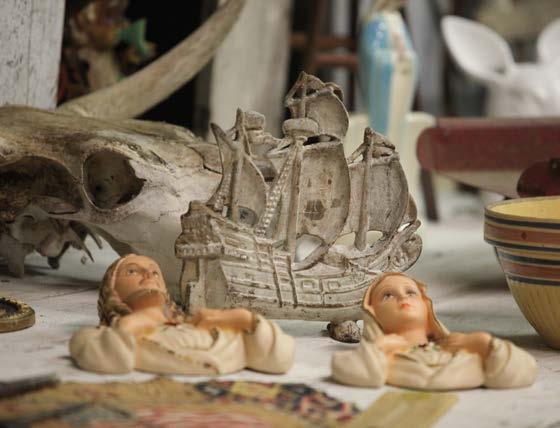
“I love Industrial,” Haycraft said. “I'm drawn to anything you look at and ask, what is that - what was it used for, anything with character, suits, fun house mirrors, you name it. There's no rhyme or reason to it. Everything has a season. Someone might turn this antique washing machine into a planter. You never know.”
Haycraft says the local market is pretty tough.

“I don't find as much around here as I used to,” Haycraft said. “Lots of pickers locally, so great deals are scarce, the market's competitive, and the margins are smaller. I do most of my pickin' in rural Pennsylvania and the southern tier of New York.”
Haycraft is originally from southern Illinois, his wife Maria is from Niagara Falls, NY.
“We actually met at a flea market,” Haycraft said. “She came into my booth about seven years ago, best flea market find ever! I travel at least two weeks a month for shows, or just pickin'. American Pickers really popularized that term.
“For our business, the show is good and bad. It gets people interested. But, people see what's happening and tend to develop unrealistic expectations about their items' worth. That show has avenues that most of us don't. It has driven costs up.”
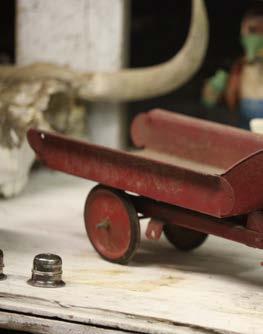
Haycraft says his favorite spots are still rich with opportunities. He also shared some of his personal wins and losses.
“One of my big fails was a Nazi porcelain sign that came out of Berlin, complete with bullet holes,” Haycraft said. “It was the real deal. I didn't know how to price it. I eventually sold it for $900, but it was probably worth $3,000 - $5,000.
“Currently, I've found a painting that we're sending to New York for appraisal. I paid $500 for it. if it's an original, it could be worth $60,000. That would really be a home-run, we'll have to see.”
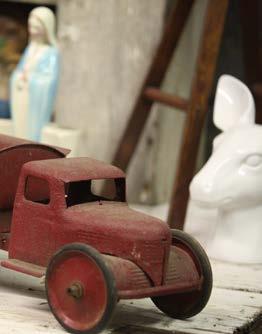
Haycraft cautions that home-runs are rare.
“The big hits don't happen that often, but there's always money to be made. I paid $2,000 for a 24' hand hewn 1850's hardware sign. It was beautiful, and sold for $9,000. That was a good margin. But, most of the time, you take 1,000 items to a show and make your money a little bit at a time. It's a lot of work. Most people don't realize that. It's not a get-rich-quick scheme. This business takes time.”
Haycraft says he mostly buys and sells as is.
“I recognize the Empire, Eastlake, Art Deco pieces to an extent, but, I still have to do my research. Signs are popular, but you have to pay up to get them. Once in a while you'll find a hidden sign in a buyout, but, everybody's aware of the value of signs, so they're getting harder to come across.
“During the recession, people were looking for cheap things they could use, now in this stronger economy people are redoing their homes, so the collectors are back in the market.”
Haycraft remembers when Mid-century could be gotten for next to nothing, now it's a hot trend.
“It's hard to predict the trends,” Haycraft said. “People want what their grandmother had, or something expensive that's affordable now. I sell a lot to Nashville decorators and designers. I buy thousands of items each year, half of which are sold to dealers. I have people from England that buy from me regularly, and I wholesale stuff to auction houses as well.”
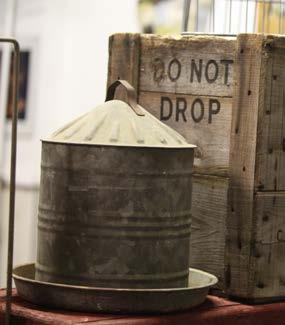
Haycraft says about 60% of his items will sell in Nashville.
“I have to keep it fresh, new things every month,” Haycraft said. “It's a hustle keeping the rotating door going. When you're buying, you have to consider all the factors. I have an expense sheet where I track all my expenses. I know what my break-even point is on each show. I can't pick up something for $10 and sell it for $11. There has to be a profit margin or I have to go back to painting.”
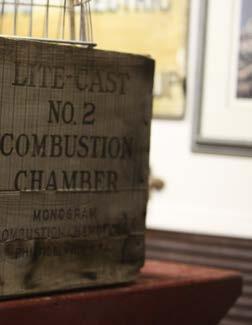
It can be a roller coaster, but he encourages anyone to pursue their passion.
“This month might be good, but you never know about next month,” Haycraft said. “I have a lot of friends in the business. We help each other, we share leads and contacts. We don't all sell the same stuff, we have different styles and tastes. My first big purchase was overwhelming, but I would love to stumble across something like that now that I know what I'm doing. I went for it and I don't have any regrets. You only live once. I started small and grew, through word of mouth. I'm not trying to conquer the world. I'm just making a living doing what I enjoy.”
Outlaw Antiques has a website, but Haycraft recommends finding him on Facebook or Instagram.



